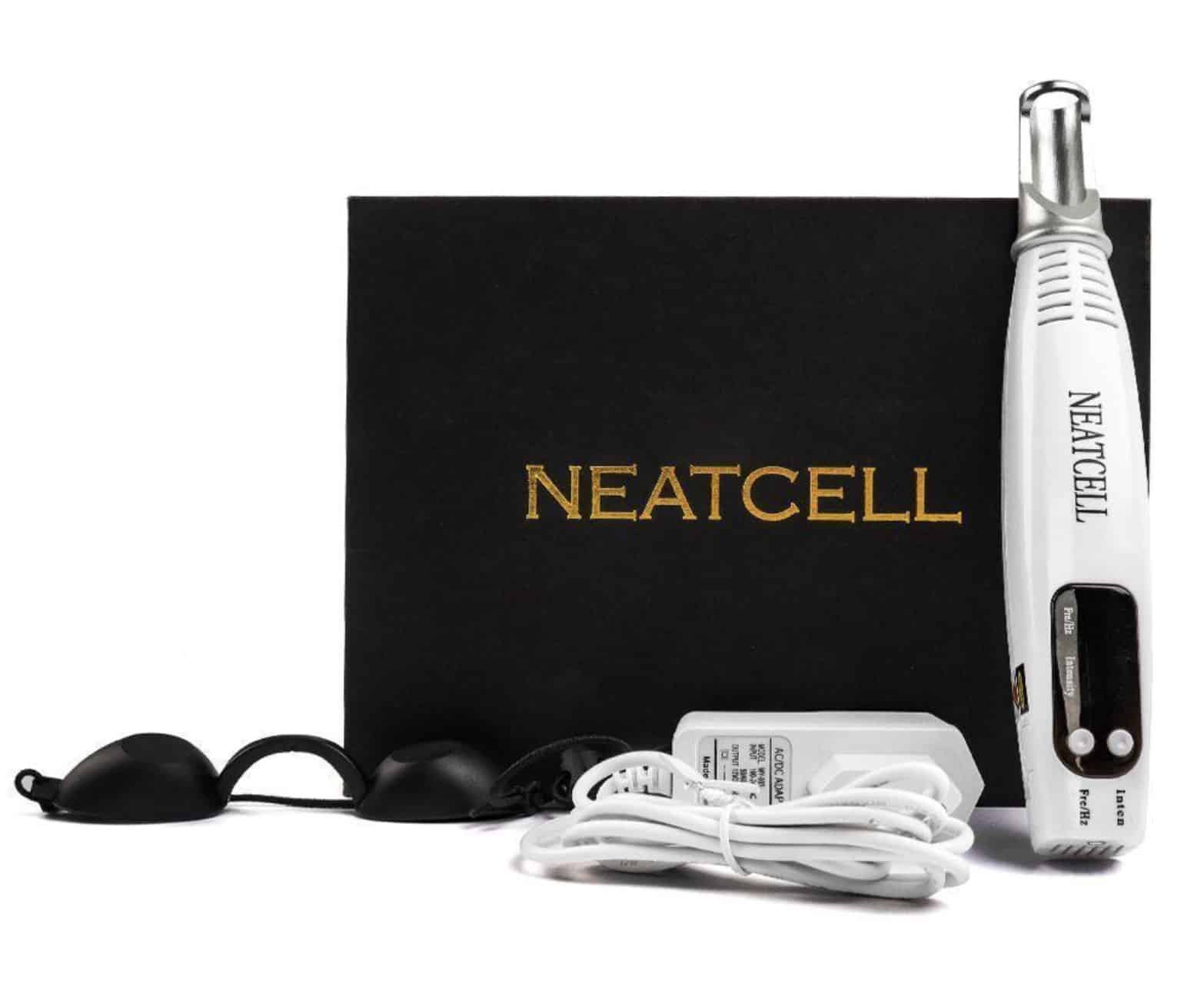As a beauty expert and skincare enthusiast always eager to test the latest advanced home technologies, I recently spent several weeks trialing the NEATCELL Picosecond Laser Pen—a device that’s been making waves for its promises of pain-free, at-home tattoo and pigmentation removal. What follows is my detailed, personal review covering my experience, technique insights, and my honest recommendation.
Table of Contents
First Impressions & Device Overview
From the moment I unboxed the NEATCELL Picosecond Laser Pen, I was impressed with its solid, compact design. The device feels sturdy in the hand and is surprisingly lightweight, making it easy to maneuver over the skin. I appreciate that NEATCELL offers both red and blue light versions: the blue pen is recommended for colored tattoos and deeper pigmentation, while the red pen targets black ink and is suitable for more superficial work. With both options, users can select from a variety of output modes and intensities, which allows for real customization depending on the task at hand—whether that’s erasing a stubborn old tattoo, lightening freckles, or reducing acne scars.
Setting up the pen was straightforward: plug it in, put on the safety glasses (absolutely essential when using the blue pen, as the light bursts are very intense), and select the lowest settings to start. The digital display and user-friendly controls made it easy even for a non-professional to operate confidently.

Treatment Experience: Comfort & Immediate Results
My first session focused on a faded tattoo on my ankle and sunspots on my cheek. I started with the lowest frequency and intensity, which many experts recommend. The sensation is unique—sharper than a microcurrent device, but nowhere near as uncomfortable as clinical lasers; at most, it felt like an elastic band snap. For those with sensitive skin, a numbing cream can be applied, but in my experience, discomfort was mild and faded quickly after the session.
I followed the instructions meticulously, including never letting the beam linger too long on any one spot and always applying a calming essence post-procedure. After the first session, I noticed some temporary darkening (which is normal), followed by gradual lifting and lightening of the targeted areas over the next several days. This is a telltale sign that the laser is breaking down pigment for the body’s natural elimination processes to take over.
Cumulative Effects: Fading Tattoos, Brightening Skin
After 4 weeks and 6 sessions, the results were genuinely surprising. The black lines in my ankle tattoo had noticeably faded—the edges looked softer and the overall design was much lighter. On my cheek, several small sunspots became significantly less visible, or vanished entirely. Notably, my skin’s overall texture improved: I observed better radiance and reduced minor fine lines, which I attribute to the collagen-stimulating effects reported in clinical research on picosecond lasers.
I also trialed the blue-light pen on a colored microblading brow, and am pleased to report a gradual but consistent decrease in pigment saturation week by week. The ability to treat a spectrum of pigment issues—tattoos, freckles, melasma, acne marks—sets the device apart and saves considerable expense compared with individual clinic visits.
Safety & Downtime: What Sets NEATCELL Apart
A major highlight of the NEATCELL Picosecond Laser Pen is its safety and comfort profile. Thanks to its picosecond technology, the laser delivers ultra-short bursts that break pigment into fine particles without causing thermal damage to surrounding tissue. This means that, when instructions are followed, the risk of burns, blisters, or scar formation is minimal.
My own skin never experienced more than mild redness and occasional pinpoint dryness, both of which resolved within 48 hours using a generous layer of post-treatment essence and diligent sun avoidance. Compared to past in-clinic laser sessions, which left me red and peeling for days, the downtime was almost negligible.
Value, Convenience & Who It’s For
Having been through many professional treatments, I was especially keen to assess whether NEATCELL’s claims of clinic-level results at home held true. In my experience, the answer is yes—particularly for gradually fading tattoos, stubborn sunspots, and slight hyperpigmentation. While deep, fresh tattoos may require more sessions (or still benefit from professional treatment), for moderate concerns, the device delivers on its promises at a fraction of clinic costs.
It’s hard to overstate the convenience factor, too. No traffic, no extended recovery periods—just targeted treatments in the comfort of my bathroom, at my own pace. The settings are customizable for all experience levels, and the device is compact enough for travel.
Final Verdict: Worth Buying?
After thoroughly testing the NEATCELL Picosecond Laser Pen on multiple skin types and trouble spots, I can confidently say this: it is absolutely worth buying for anyone seeking a safe, effective, and affordable way to manage tattoos and skin imperfections at home. While it may not replace the most powerful professional lasers for every scenario, its combination of results, minimal recovery time, and multi-use design have made it a standout addition to my beauty tech arsenal. I’ve already recommended it to several clients and friends, and will continue to do so.